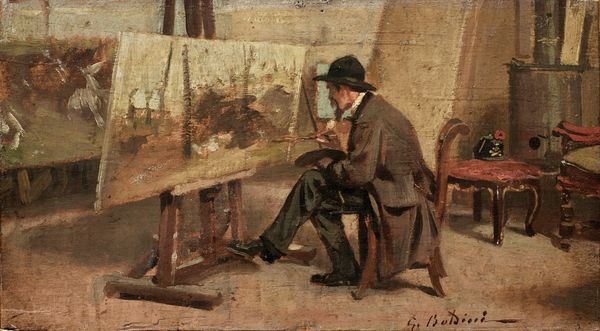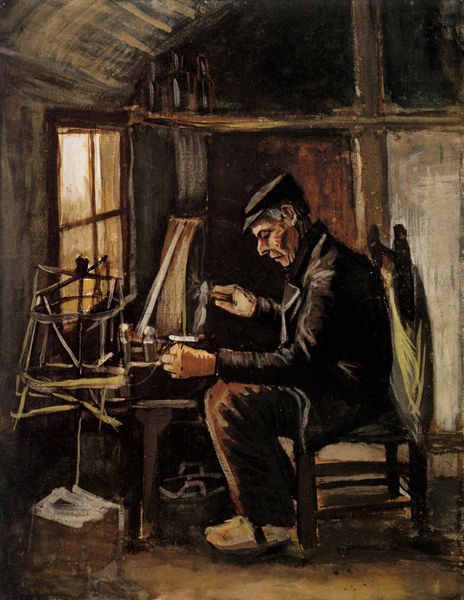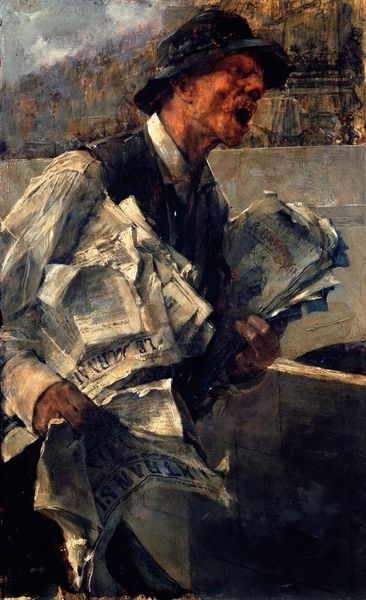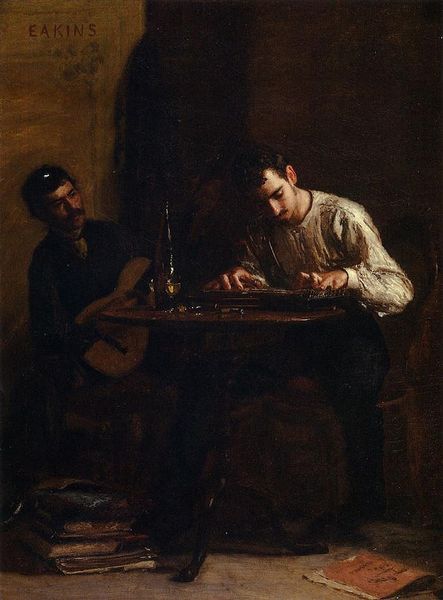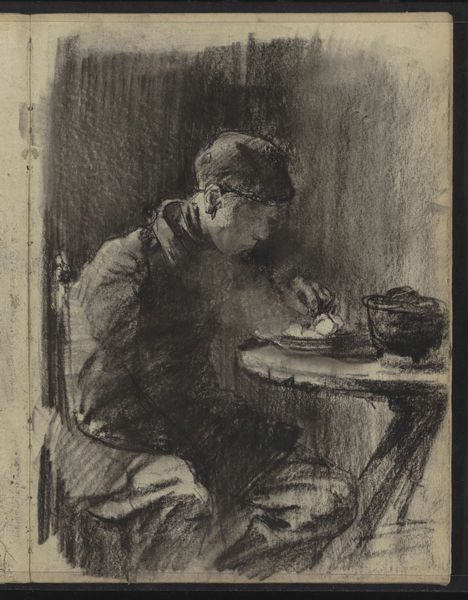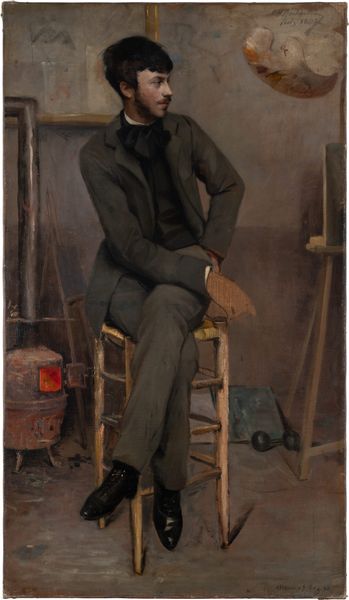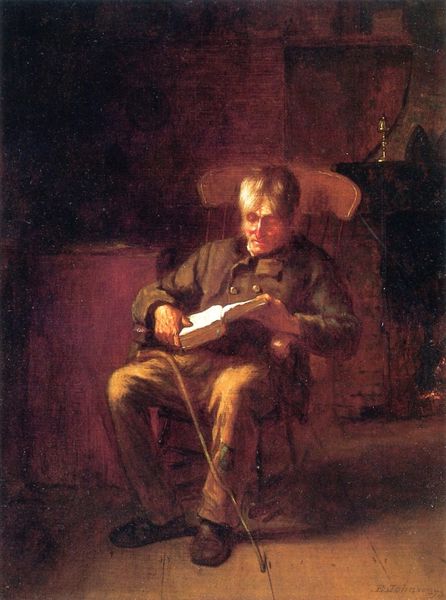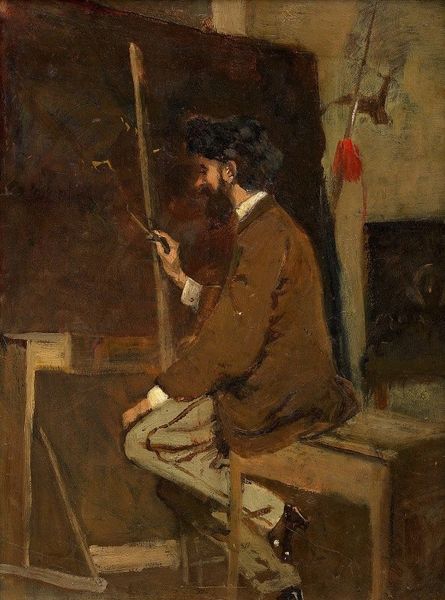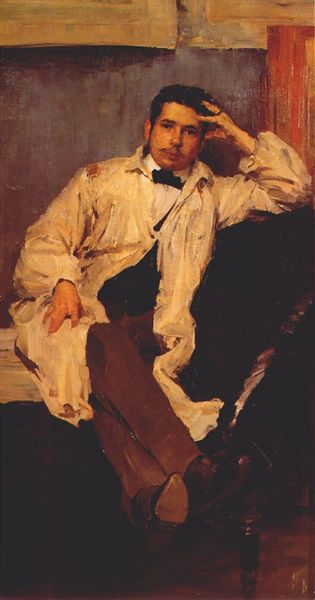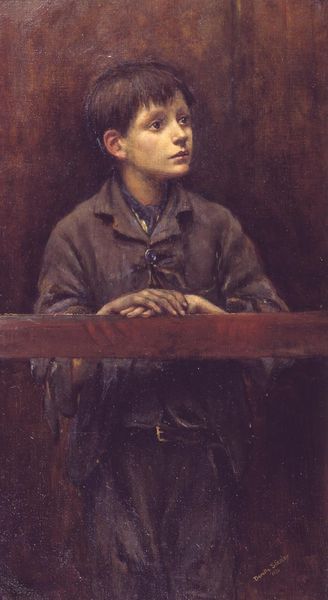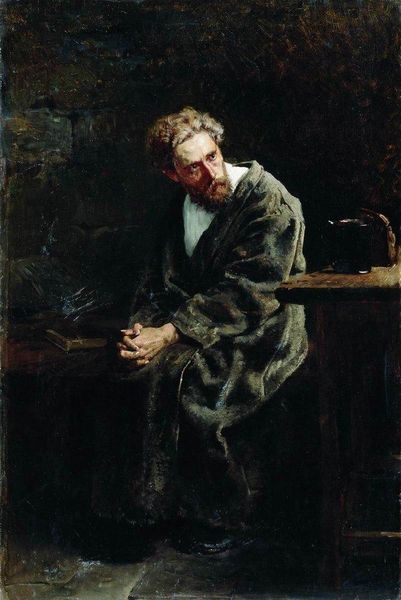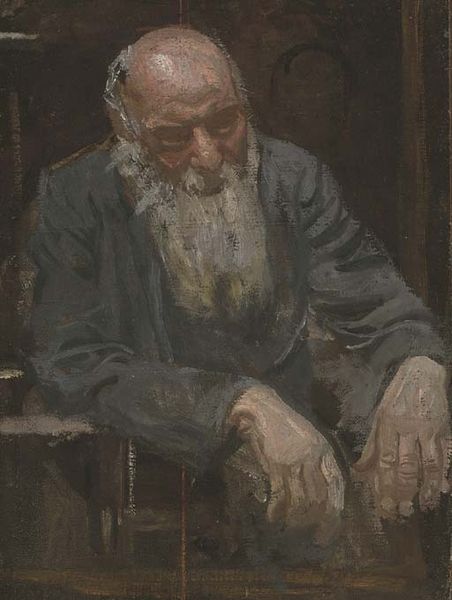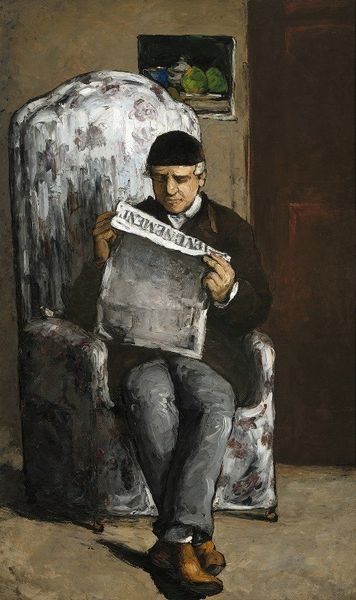
Frederic Bazille Painting The Heron (Frederic Bazille at his Easel) 1867
0:00
0:00
painting, plein-air, oil-paint
#
portrait
#
self-portrait
#
painting
#
impressionism
#
plein-air
#
oil-paint
#
oil painting
#
sitting
Dimensions: 73.5 x 105 cm
Copyright: Public domain
Curator: Looking at Renoir’s 1867 painting "Frederic Bazille Painting The Heron," the prevailing feeling is one of introspection. Do you agree? Editor: Absolutely. It feels intensely private, almost voyeuristic, like we're intruding on a moment of artistic creation. The subdued palette only amplifies that quiet mood. Curator: Indeed. Bazille, the subject, is caught in a very particular symbolic posture: he’s creating, generating a new image. But he’s not looking at us. He’s fully absorbed, his downward gaze suggestive of internal focus. Editor: And the painting within the painting becomes fascinating. A heron, suspended mid-creation. Is that Bazille’s way of associating the act of painting with the wild, natural world? I see this in the context of Impressionism's focus on light and atmosphere, this hints to something primal. Curator: I think you are right to spot that link, Editor. The Heron image resonates through cultural memory: it’s a classic hunting symbol, often tied to aristocratic pastimes. Here we see a tension with Impressionism and their break with academic styles favored by earlier elites. What the choice says is this artist finds creative energy by associating to historical archetypes, giving it all a twist. Editor: Yes! And the studio space is almost claustrophobic, with finished landscapes on the back wall, which seems a very deliberate political move on Renoir's part, creating visual dialog with Bazille's current focus in a setting. The painting almost seems to assert the power of the collective art movement while also emphasizing individual struggle. Curator: Precisely, these intimate images function politically in a community setting, strengthening mutual understanding and goals. It is worth adding that the use of oil paint – so critical to rendering texture and the impression of light, adds to the image this impression of being unfinished. Editor: Ultimately, for me, this work remains profoundly human and generous. Renoir captures a fleeting, almost reverential, moment of a friend deeply engrossed in his own creative journey. Curator: A generative image indeed, that helps us interpret Impressionism. This picture speaks across the centuries, revealing the inner concentration that goes with creation.
Comments
No comments
Be the first to comment and join the conversation on the ultimate creative platform.
